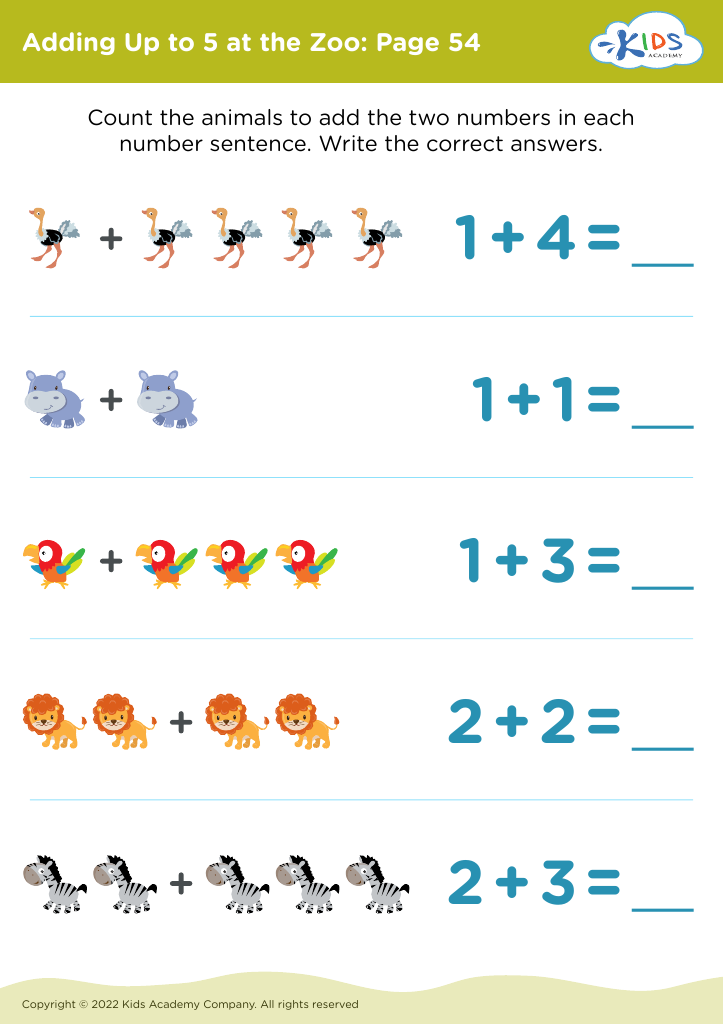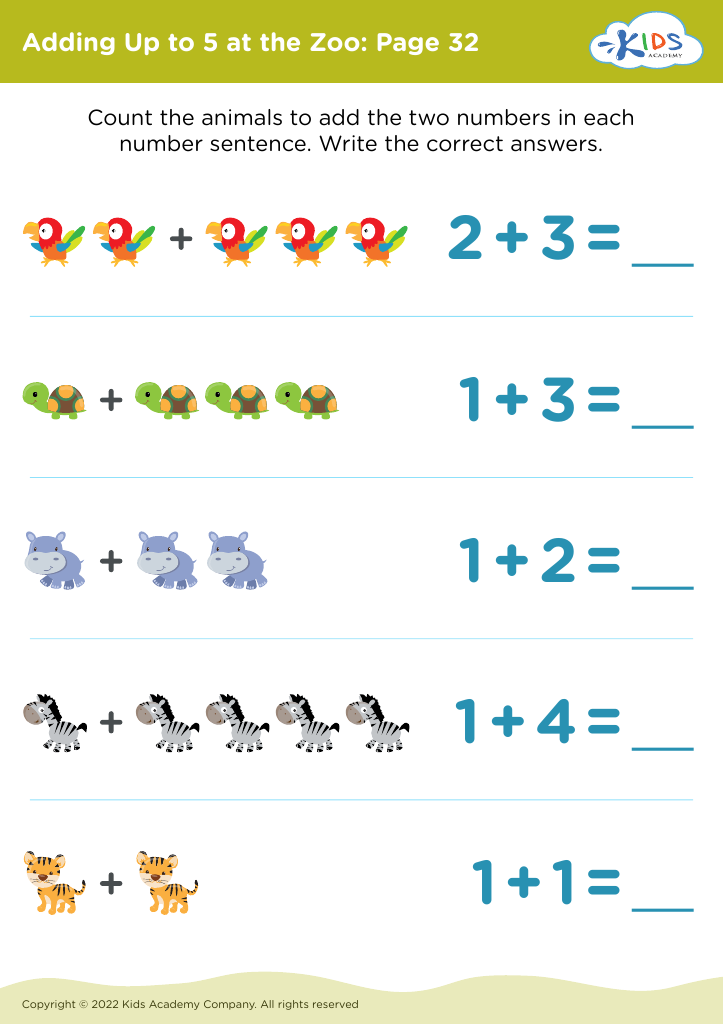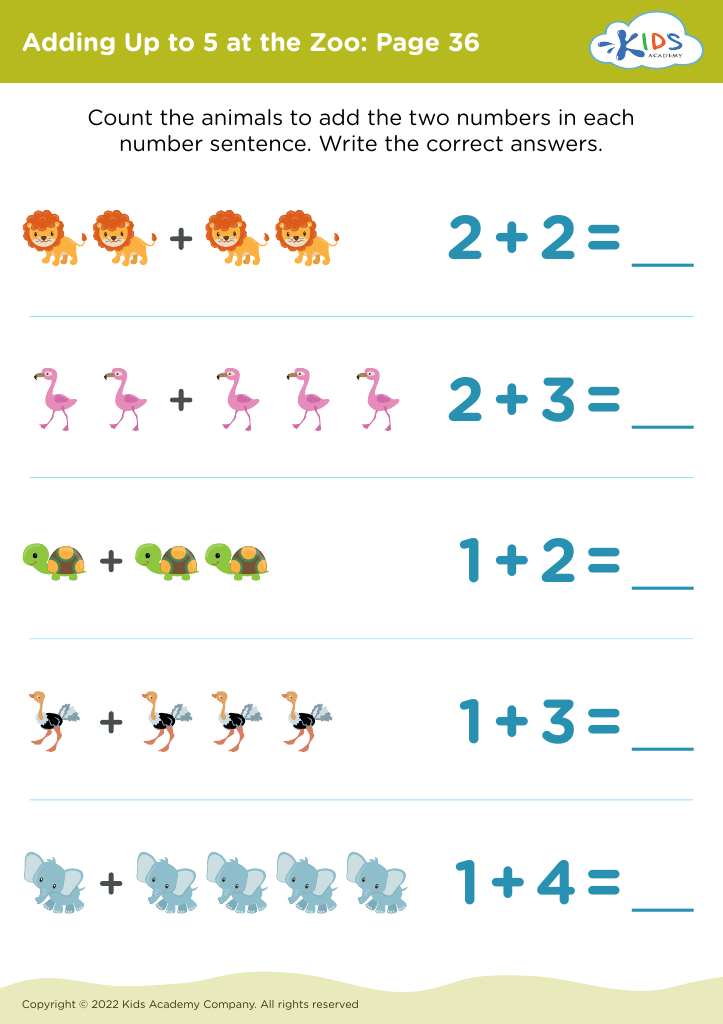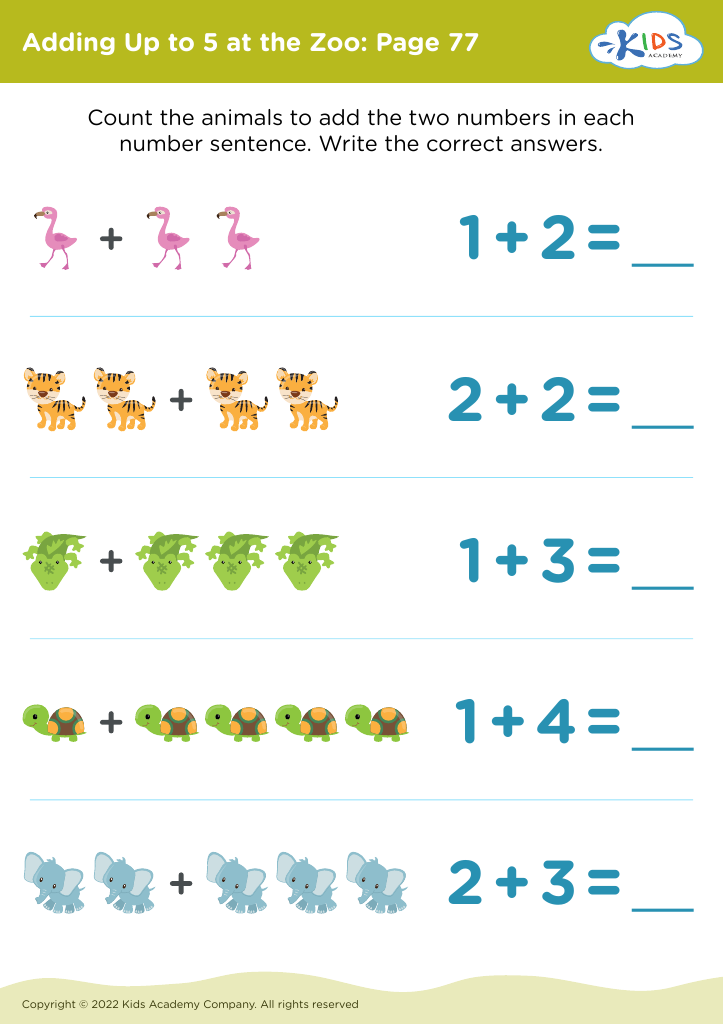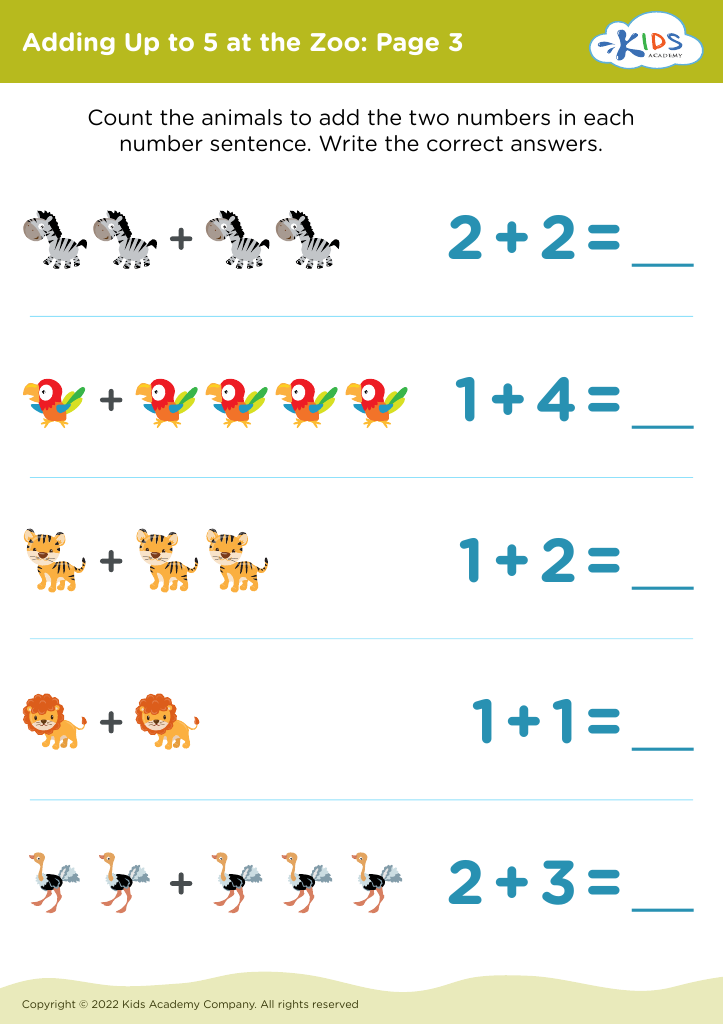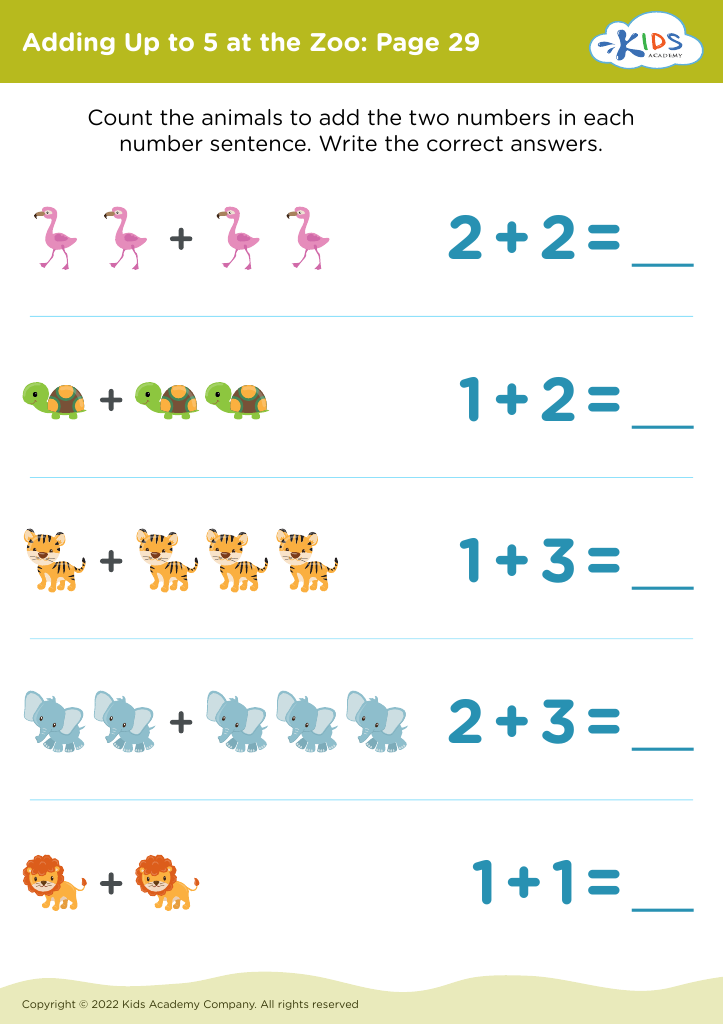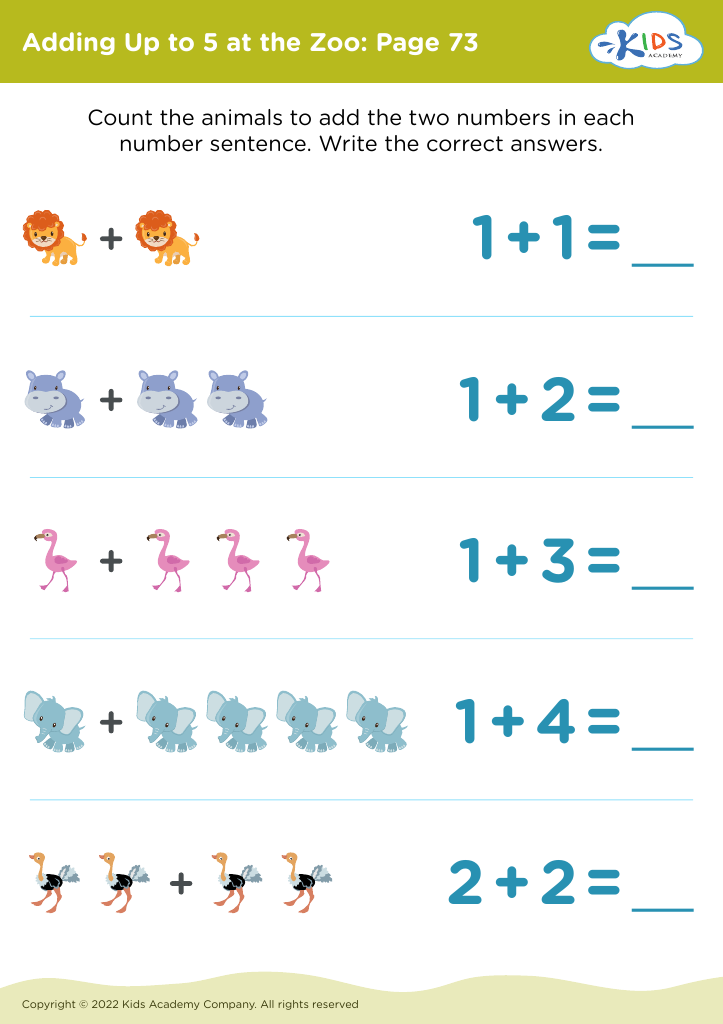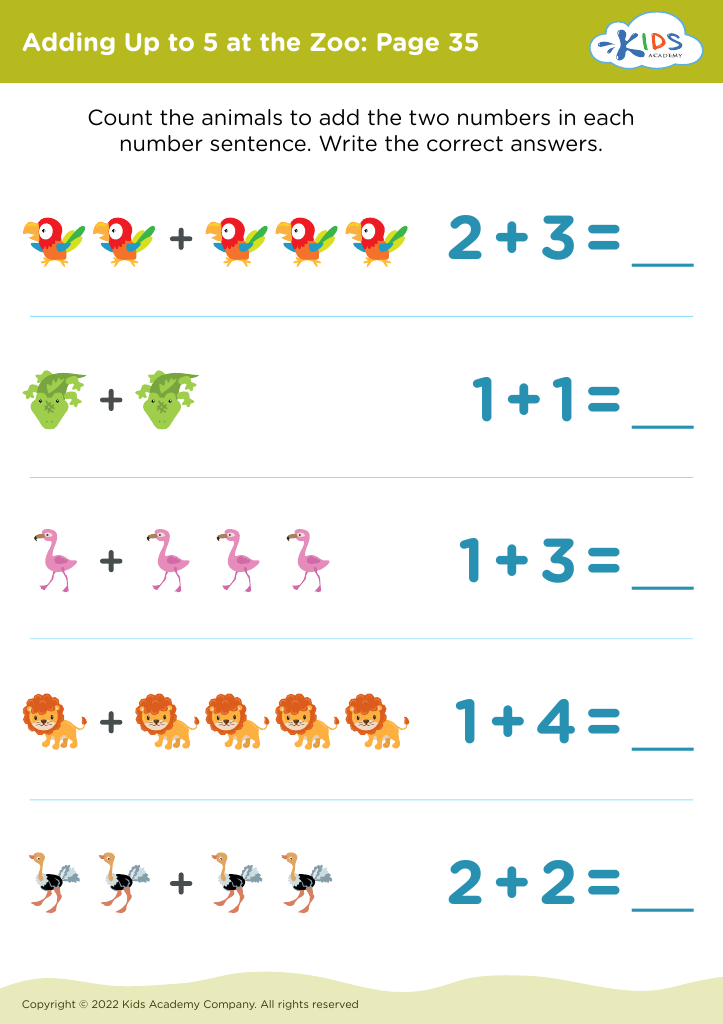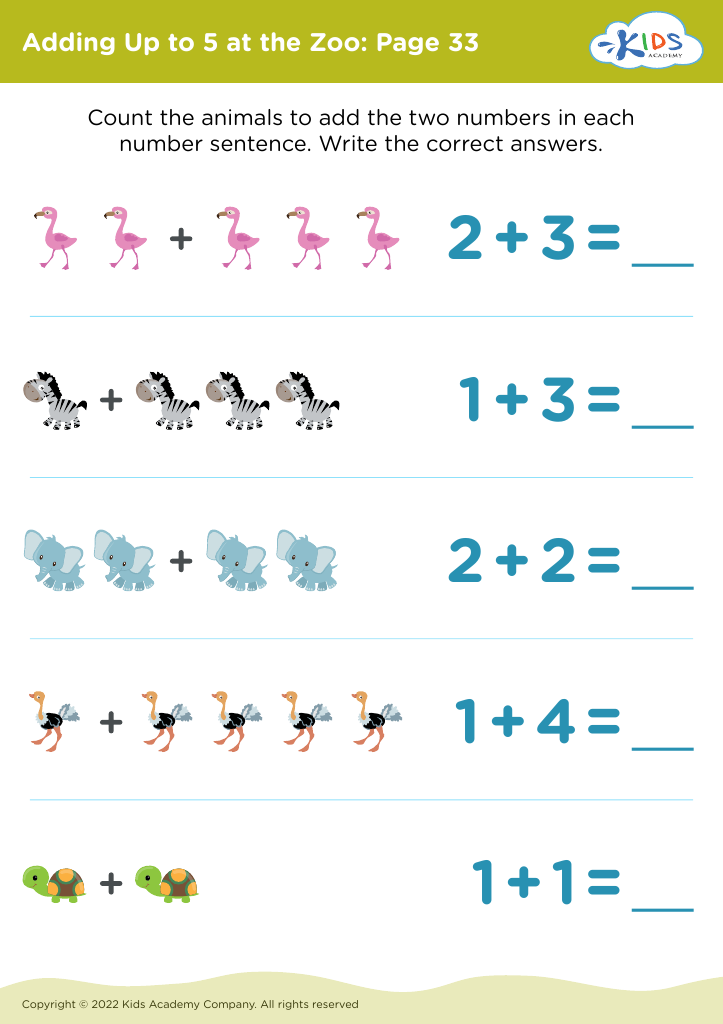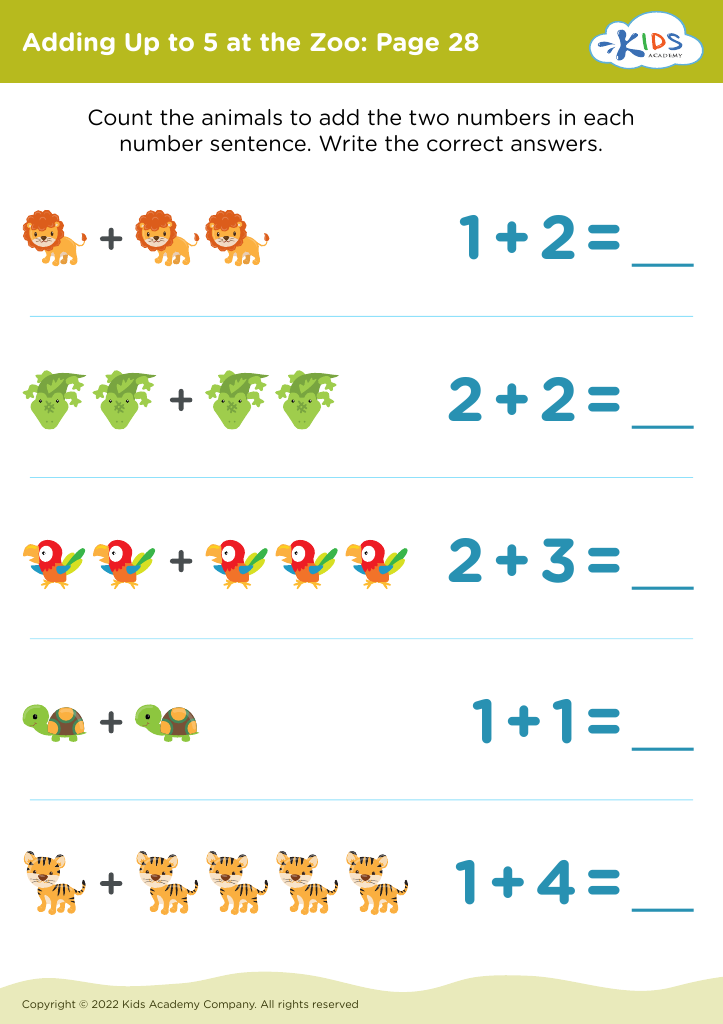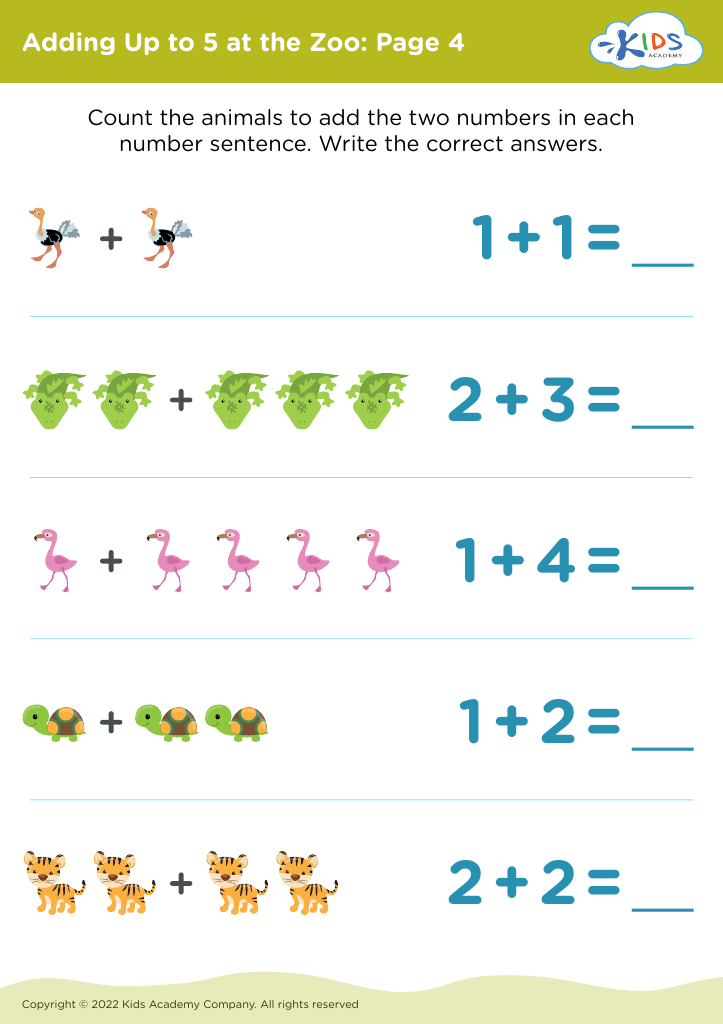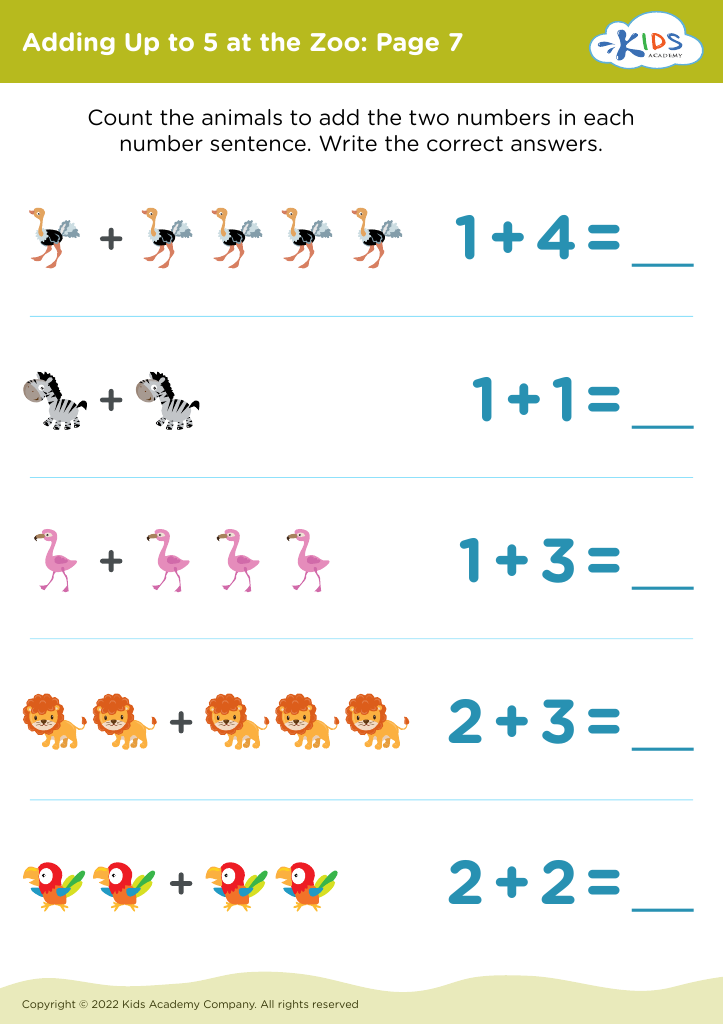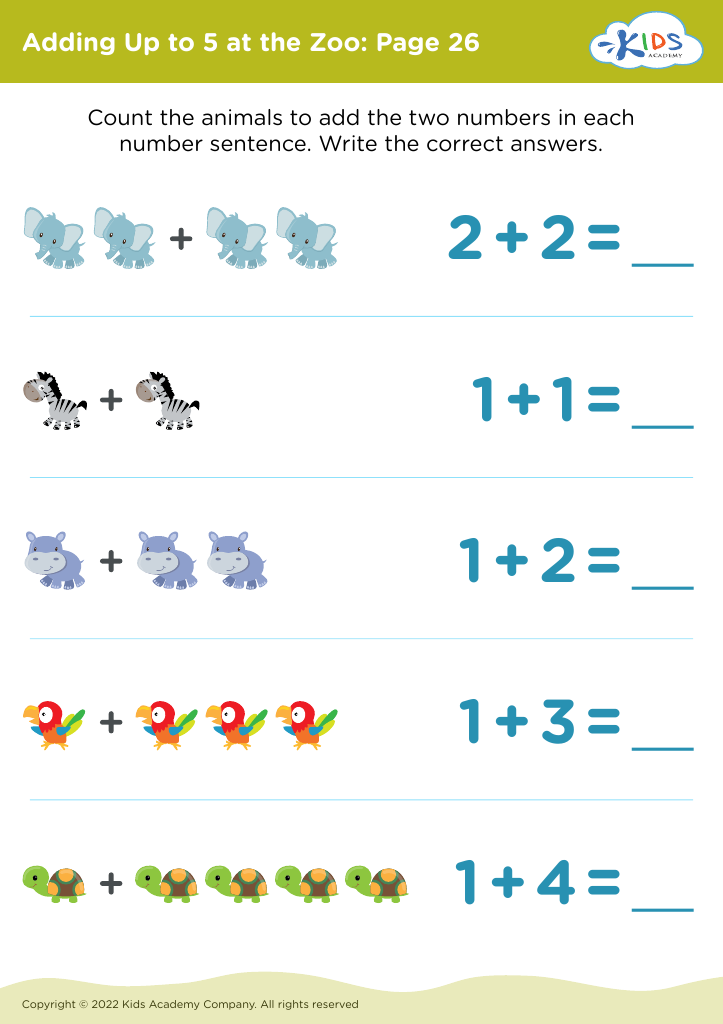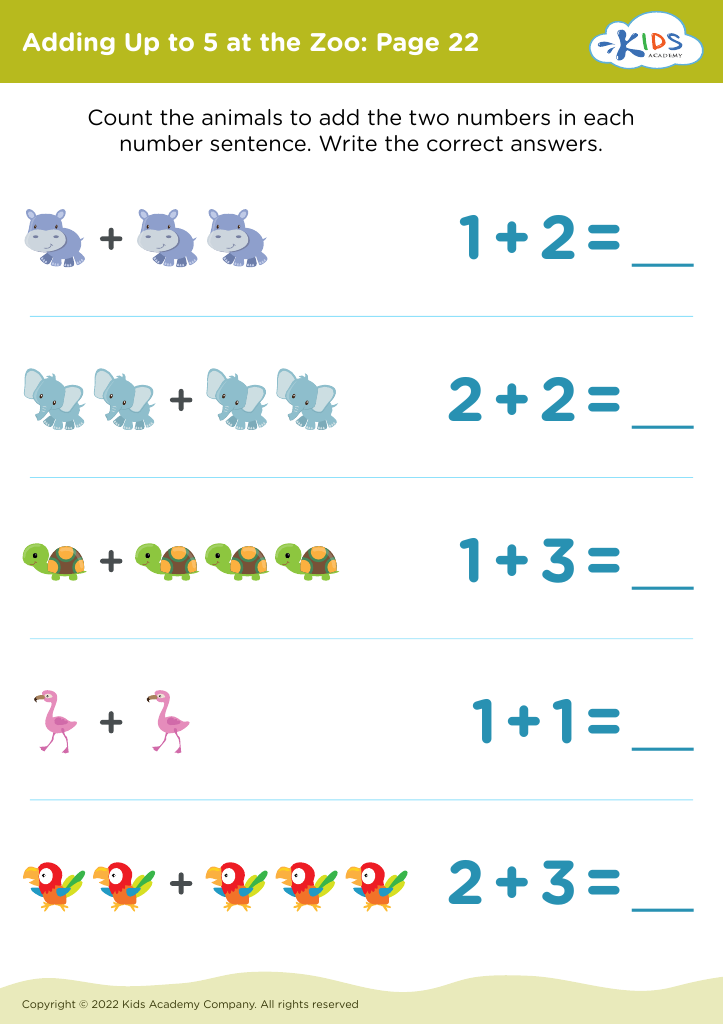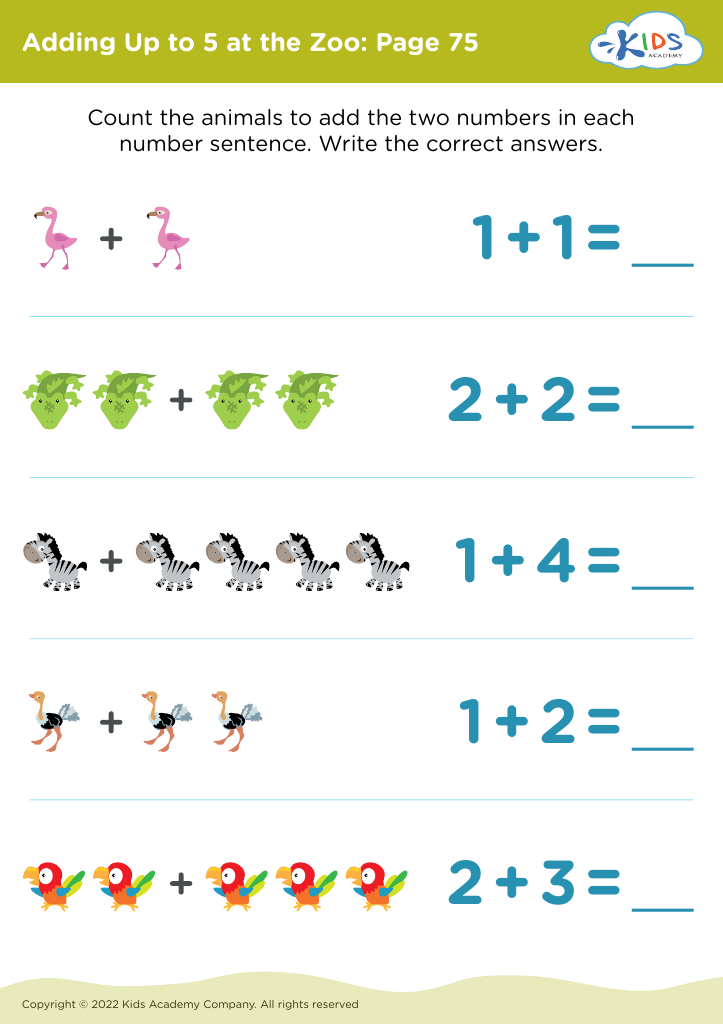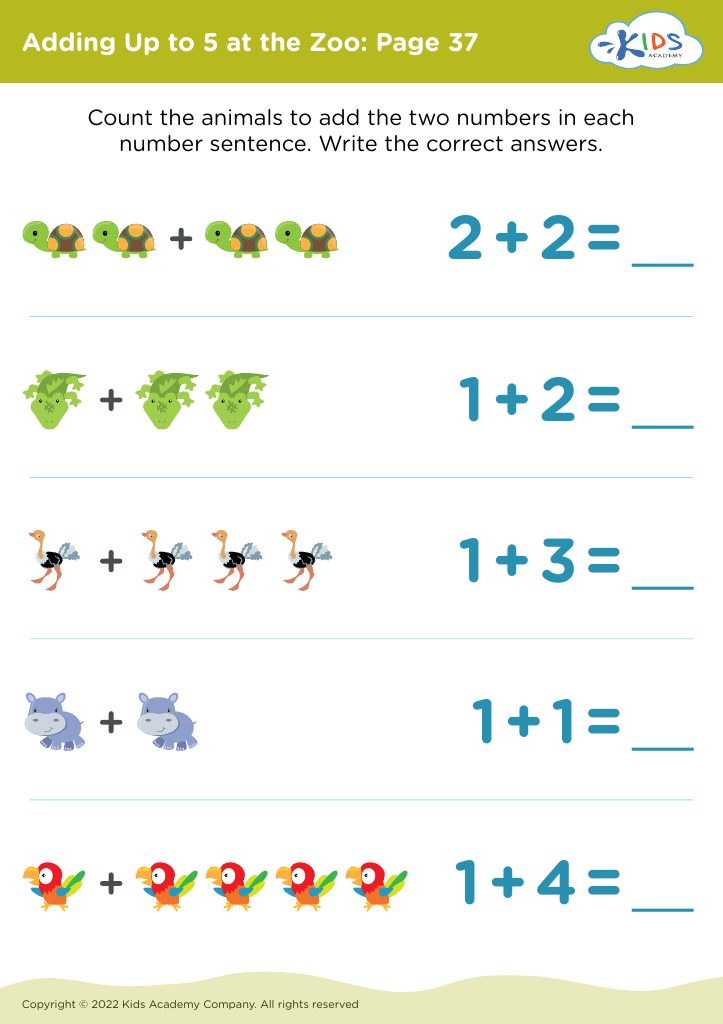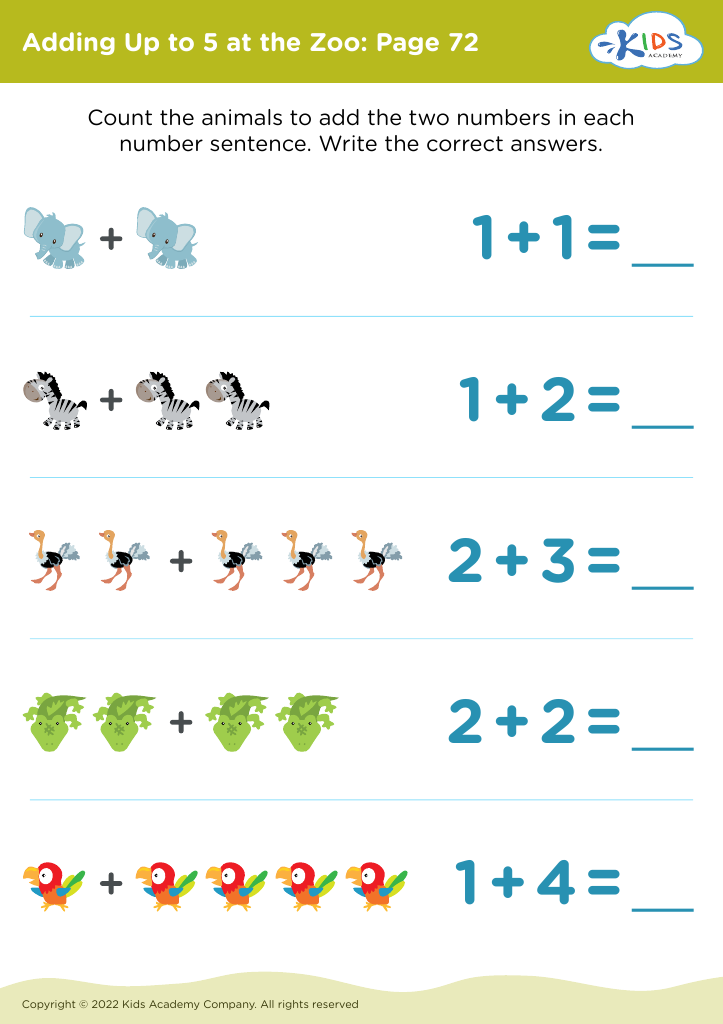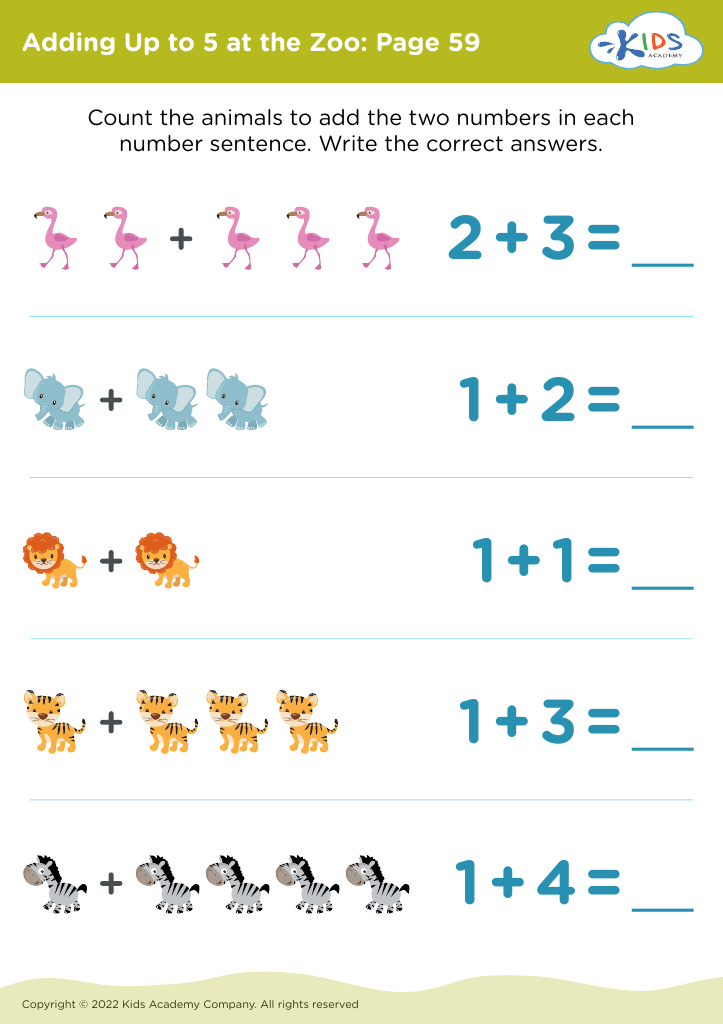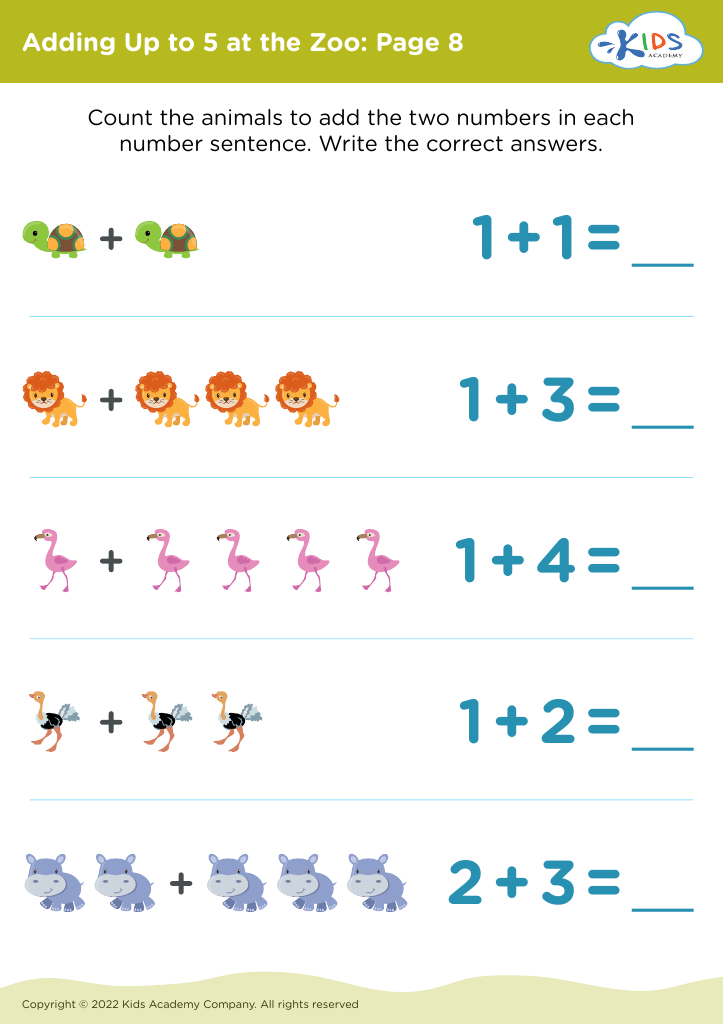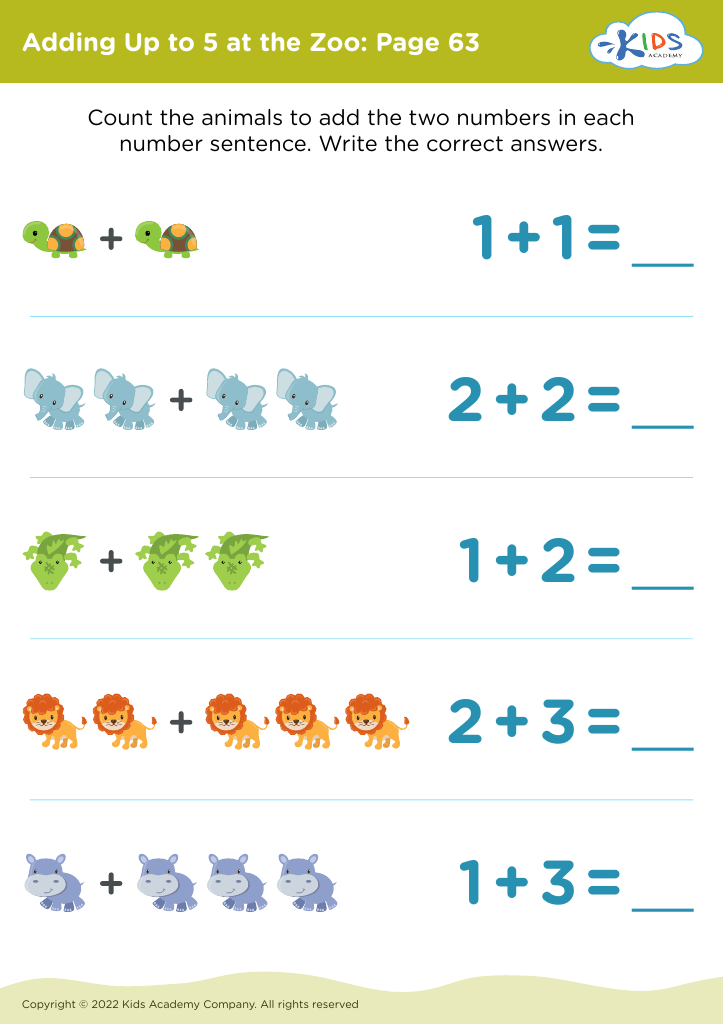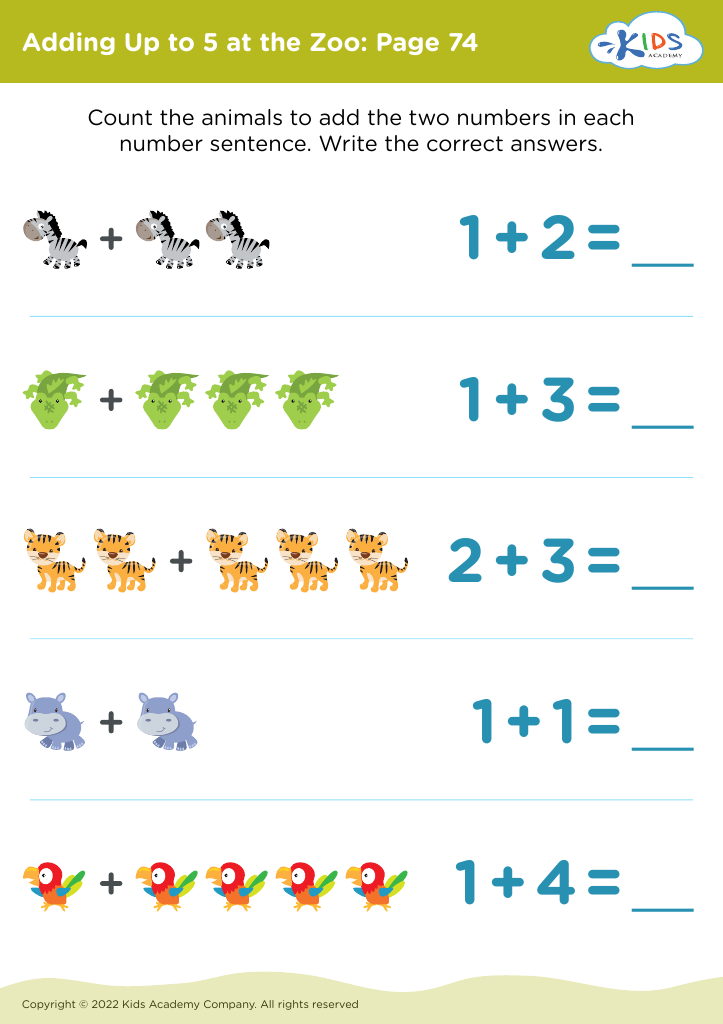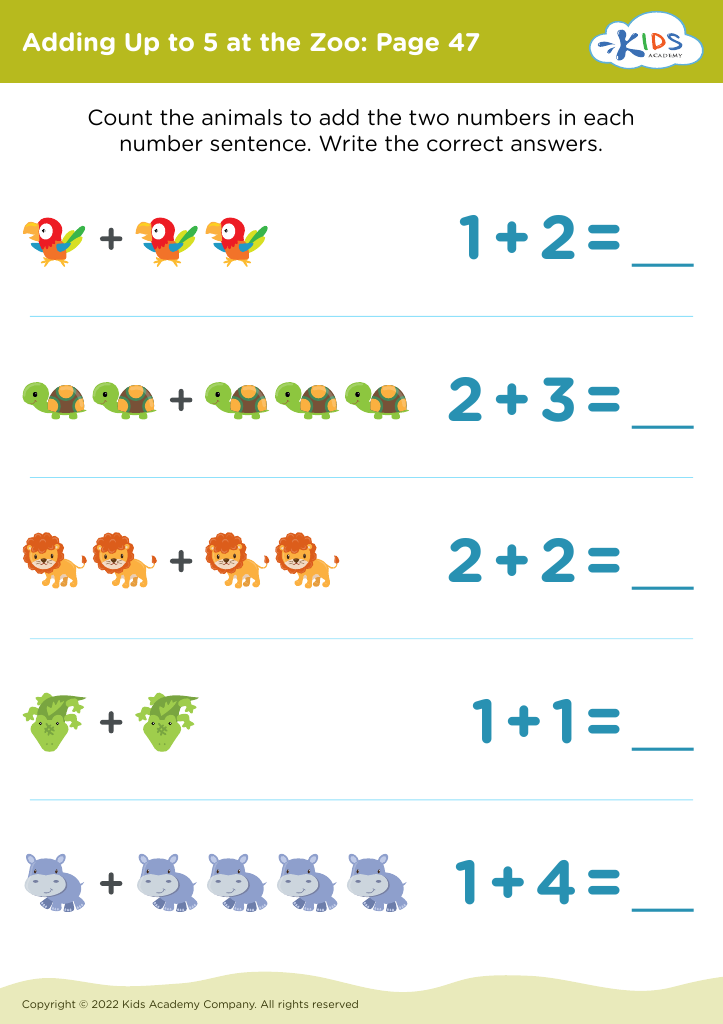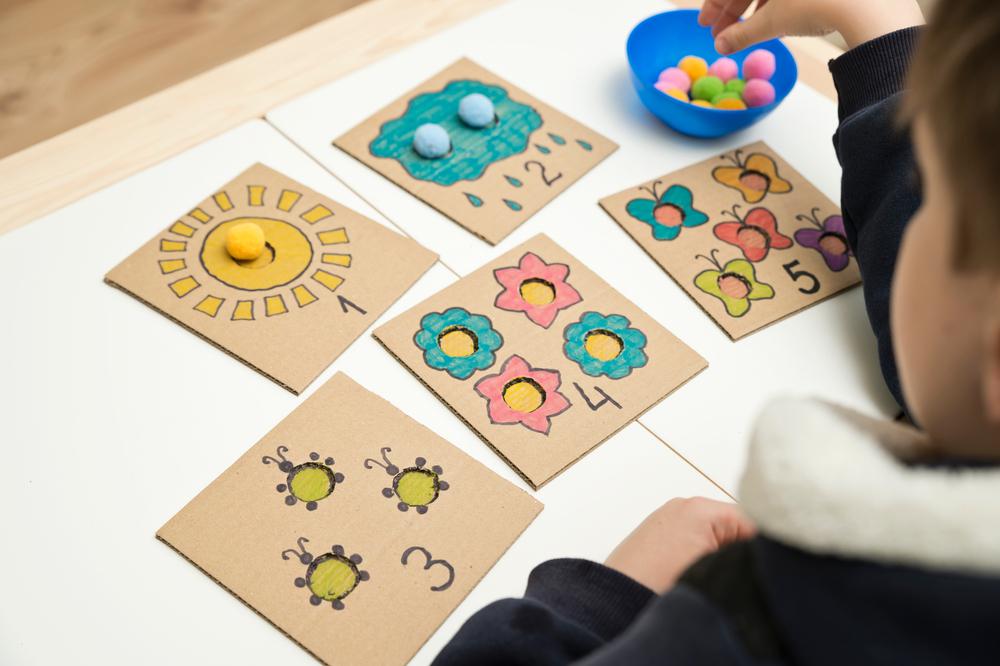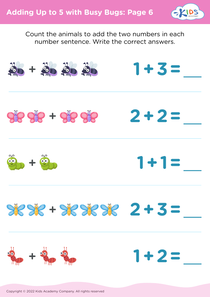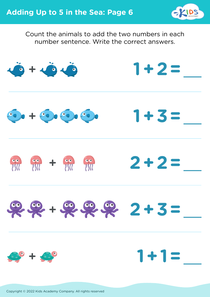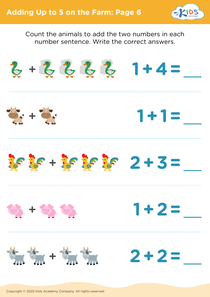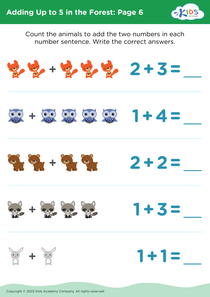Number Recognition Adding at the Zoo Worksheets for Ages 4-9
71 filtered results
-
From - To
Discover the joy of learning with our "Number Recognition Adding at the Zoo Worksheets" for ages 4-9! These engaging, educational worksheets invite young learners on a math adventure through the zoo. As children explore, they practice recognizing numbers and enhancing their addition skills with fun zoo-themed activities featuring adorable animals. Perfect for early learners, these worksheets are designed to develop foundational math skills in an exciting, interactive way. Boost your child’s confidence and enthusiasm for math with Kid's Academy's expertly crafted resources. Start your child’s journey to numerical mastery today with our delightful worksheets!
Number Recognition Adding at the Zoo is an ideal educational activity for kids aged 4-9 due to its multifaceted benefits that support early childhood development. First, it reinforces number recognition, a foundational skill in mathematics. As children identify, count, and add numbers associated with zoo animals, they strengthen their numerical understanding and recall, which is crucial for higher-level math learning.
The engaging zoo theme captivates children's attention, making learning enjoyable. This engagement is key for motivating young learners and fostering a positive attitude towards math. The imaginative setting sparks curiosity and enthusiasm, turning abstract numbers into tangible, relatable experiences.
Additionally, incorporating animals into the activity aids in cross-curricular learning. Kids not only practice math but also get to learn about different animals, their habitats, and behaviors, merging science and math in a seamless and enjoyable manner.
Moreover, Number Recognition Adding at the Zoo supports fine motor skills through writing numbers and performing simple addition tasks, as well as cognitive skills like problem-solving and logical thinking. For parents and teachers, it's an efficient tool to assess children's developmental progress in a fun, non-intimidating way.
Overall, this activity nurtures a holistic learning environment where children’s mathematical, cognitive, and interest-based skills can thrive concurrently.

